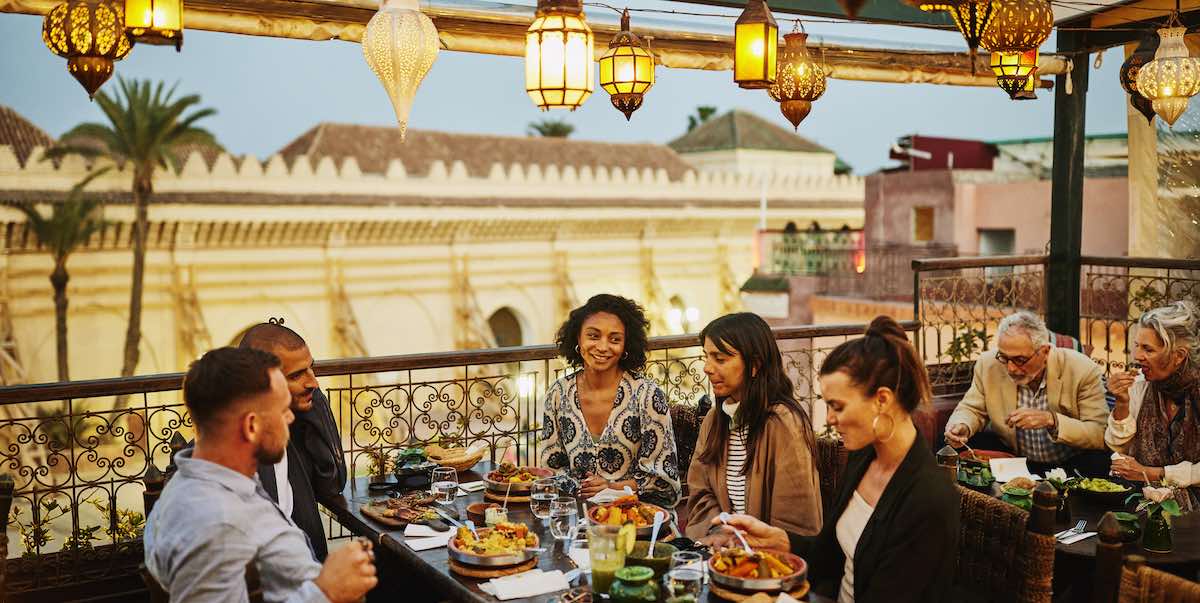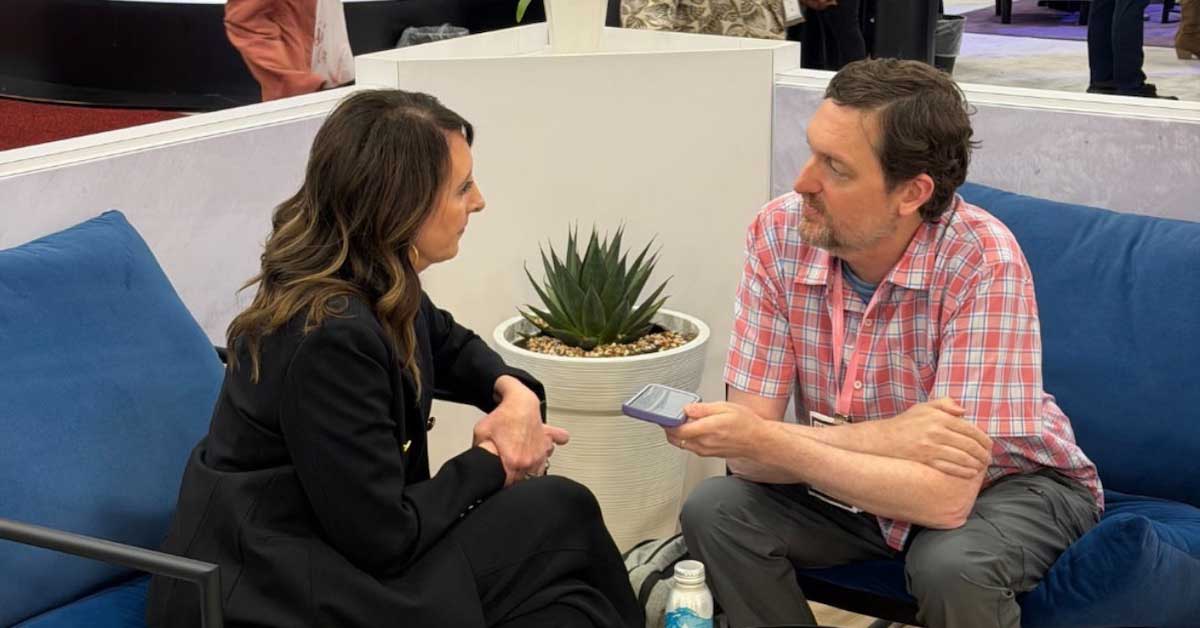More than a decade ago, award-winning investigative journalist Peter Gorman took on the topic of why we meet, writing a brilliant tale for MPI. Trimmed for length, we feel the time is right to once again share this reminder with our community.
“Face-to-face meetings are the most primal and instinctual way to take the measure of your colleagues or adversaries,” says Lynn Chilson, CEO of Chilson Enterprises and a business consultant specializing in getting diverse organizations to work with one another.
While Chilson is talking about today’s business world, he might as well be talking about ancient humans. The meeting point, whether it be in a boardroom or an encounter over tribal hunting space, is a critical moment, often fraught with anxiety. “Will I be accepted?” we wonder when readying to make a presentation or going out on a first date. “Will I meet expectations or fail miserably?” And in that moment when we do meet, myriad social synapses fire.
“You make instantaneous physical, emotional and spiritual judgements about the person,” Chilson says. “You judge them by their clothes, their style, their cologne/perfume, their physical stance, their eye contact. You determine whether the person is competent, trustworthy, a friend or enemy. These are things that only occur on physically meeting other humans. And despite the world growing so small with all of the telecommunication we have nothing that will ever replace that.”
We may not always like meeting strangers, but for numerous reasons we’re obligated to. Ancient Mongols, a nomadic people, preferred to live in smallish clans as they herded sheep and cattle and moved across the vast steppes of East Asia in constant search of fresh pasture. But to maintain fresh bloodlines for their horses they had to learn to trade amicably for them with the Persians and Chinese. And at both annual festivals and in times of need, the small clans would gather together in large groups to either celebrate or solve problems of mutual interest.
“Face-to-face meetings are the most primal and instinctual way to take the measure of your colleagues or adversaries.”
Every sociology class begins with the idea that humans are social animals. While there have always been a few who prefer to keep their own company and avoid contact with others as much as possible, most people find it necessary to interact with other people. The most important reason for that is our genetic coding that urges us to continue our species. To do that, people must meet and breed—and as social animals, they are subsequently bound up in the successful raising of their offspring. That family unit is the most basic and earliest social structure for humans. And the extended family, where parents raise several offspring who then go on to have their own offspring—the basis for clans and tribes—gave rise to the first social order in humans.
“Now a lot of those tribes or clans did their best not to interact with other tribes because other tribes represented a threat, real or imagined,” says Lilah Williamson, an associate with the Department of Anthropology at the American Museum of Natural History in New York City. “But their own tribes could grow quite large, too large to stay together and have enough food. So, they might disperse in the winter when food was scarce and then come back together in the summer when food was plentiful. The Plains Indians are an example of that, and so are many tribes in East Africa. Some of those are so large that part of the tribe might become pastoralists while another part might be agriculturalists. Now they have long traditions of having to meet so that they can trade for each other’s products that they need.”
In smaller tribal groups, marriage was often a reason for celebratory gatherings.
“Some groups are just too small for people to marry within them—so that pushes them to get together,” she says, noting that fighting a common enemy also often brought disparate groups together.
Dr. Richard Warms, a professor of anthropology with Texas State University, sees interaction among early and even tribal people a little differently.
The meeting point, whether it be in a boardroom or an encounter over tribal hunting space, is a critical moment, often fraught with anxiety.
“From an anthropological point of view, all we really have to go on is a model of how primates interact,” he says. “And from them we know that [humans are] biologically a social animal. That’s a given. And in my experience, I think that band-level societies, those groups both in the past and those who continue to exist, are very fluid. In these foraging and gathering societies members tend not to shun outsiders but to meet and incorporate them. So, membership is apparently flexible. Which is not surprising given that those societies don’t have ownership of property, without which there’s not much tendency for people to need to band together to protect what they own. Imagine you were in a band of 50 individuals ranging over an area of several hundred square miles, hunting and gathering: Even if you wanted to you would have no way to protect that large an area from outsiders.”
Ownership is where protection comes into play, Warms says, and first crops up when resources are not plentiful. When there is only a small productive area or limited water supply, or the band gets too large to survive on hunting and gathering, that’s when protecting resources becomes vital to survival.
“Once a band moves into farming or becomes pastoralists or needs to protect something like a limited water supply, the ‘big dog’ prestige factor becomes important,” he says. “And the question of who’s the big dog plays into every society in some form or another from that point on, because the same organizational skills required to manage farming are similar to those required to manage warfare.”
The big dog, Warms says, is the person who can best organize production—and this person receives prestige for that.
“[In later societies, this person] gets the biggest house, the most money, the private jet,” he says. “Interestingly, one of the ways tribal people get prestige is through what we anthropologists call feasting or fighting. The [big dog] organizes the farming to the point where the group is producing a great deal more than they need. Then you call a feast. But you don’t necessarily just invite friends, you invite people you mean to impress. One of the great examples of this is the Yanomamo of northern Brazil and Venezuela. If you believe the anthropologist Napoleon Chagnon, who spent a great deal of time with them, warfare is at the heart of their society. As is feasting. But at their feasts their enemies are invited. The theory is that you are offering a friendly gesture but at the same time putting your enemies in your debt. So, you’re using the feast to scope out potential alliances but you’re forming those alliances with rivals.”
Not unlike the way business is often done in the world today.
Spread of Socialization and Job Specialization
As societies grew, the need for people to be social expanded: ancient Egypt and the flowering periods of Greece and Rome required not just a big dog but a whole hierarchy of big dogs, each with an area to focus on and each with its own mini-hierarchy, or bureaucracy, to run the disparate elements under its domain. And to run large city-states, physical labor needs often resulted in the enslaving of nearby populations, a kind of forced meeting that was certainly on unequal terms.
The rise of those states also led those in power to reach further and further from their home bases to acquire new and exotic things to add to their prestige as the big dog. Empires were built with tiny countries like England able to control vast areas of the globe through the use of force or reciprocal trading. And all of those interactions involved people meeting people—not always on equal or fair terms, but still, people gathering together.
Too, job specialization made meeting people who could fulfill your needs while you fulfilled someone else’s vital. One of the jobs that became indispensable in the last couple of thousand years but didn’t even exist in tribal societies was that of middleman. The person who could collect goods from one party, or several parties, and get them into the hands of the people who wanted or needed them, from shopkeepers to international traders, was of crucial importance to maintaining the day-to-day stability of complex societies. That middleman position, even more vital today, allowed people to connect in a sort of virtual way, through someone else—not unlike how the computer acts as a middleman for us in both personal and business situations today.
With job specialization came a heavier reliance on other people—which pushed people into meeting more people than they would have needed to in a self-reliant or self-contained clan. It also brought with it a sense of alienation in that there was also a loss of the basic tribal acknowledgement of the individual.
“Nothing holds the value of breaking bread.”
“In a tribal situation, you were acknowledged for your contribution to the tribe,” says Addison Terry, a retired lawyer and mediator. “These days, that’s not automatic.”
Terry points to Abraham Maslow, the famed psychiatrist who developed the Hierarchy of Needs to explain the importance of that acknowledgement. Maslow suggested that humans have a number of needs but that those needs follow a certain order. Air, water, food and sleep are at the base level of what might be seen as a pyramid of needs. Once you’ve got those needs—which are instinctual—taken care of, you move on to trying to take care of the next set of needs: security, health and a need for structure. Once those are taken care of you look to fulfill the needs of friendship or belonging to a group. The next level involves prestige, respect, recognition. The highest level is reserved for self-actualization.
As a mediator, Terry says one of the key issues that nearly always came into play was the issue of respect.
“The key in mediation was to listen to people. Really listen,” he says. “And if I could get both sides to do that, it frequently was like having both sides meet each other for the first time again. And if you can get them to that point, the problems sometimes worked themselves out. All they really wanted was to be heard, to be respected, to be acknowledged. And that’s vital for all situations in which people meet each other, whether it’s to go out on a date or to go for a job interview or to meet the CEO of your company.”
As the needs on Maslow’s hierarchy are met, the reasons people meet change. Whereas ancient humans might have taken a spouse out of a biological need, modern man or woman, given that most of their physiological and safety needs are taken care of, has the leisure to be pickier in whom they choose to mate with, or even whether to mate at all. And with the explosion of the internet, even the ways in which we meet have changed.
While meeting people virtually has its place, meeting them in person is where you really get to know them.
“Nothing holds the value of breaking bread,” Chilson says. “We all know our world is smaller than it was when people only needed to worry about gathering enough food for the day. Heck, I’ve had projects where people in Egypt who didn’t even speak English were providing major services for an American company in partnership with the French. But to make that work, the first step was always meeting people face to face. That’s where our instincts let us know who we’re dealing with. And to me, that’s a must.”







